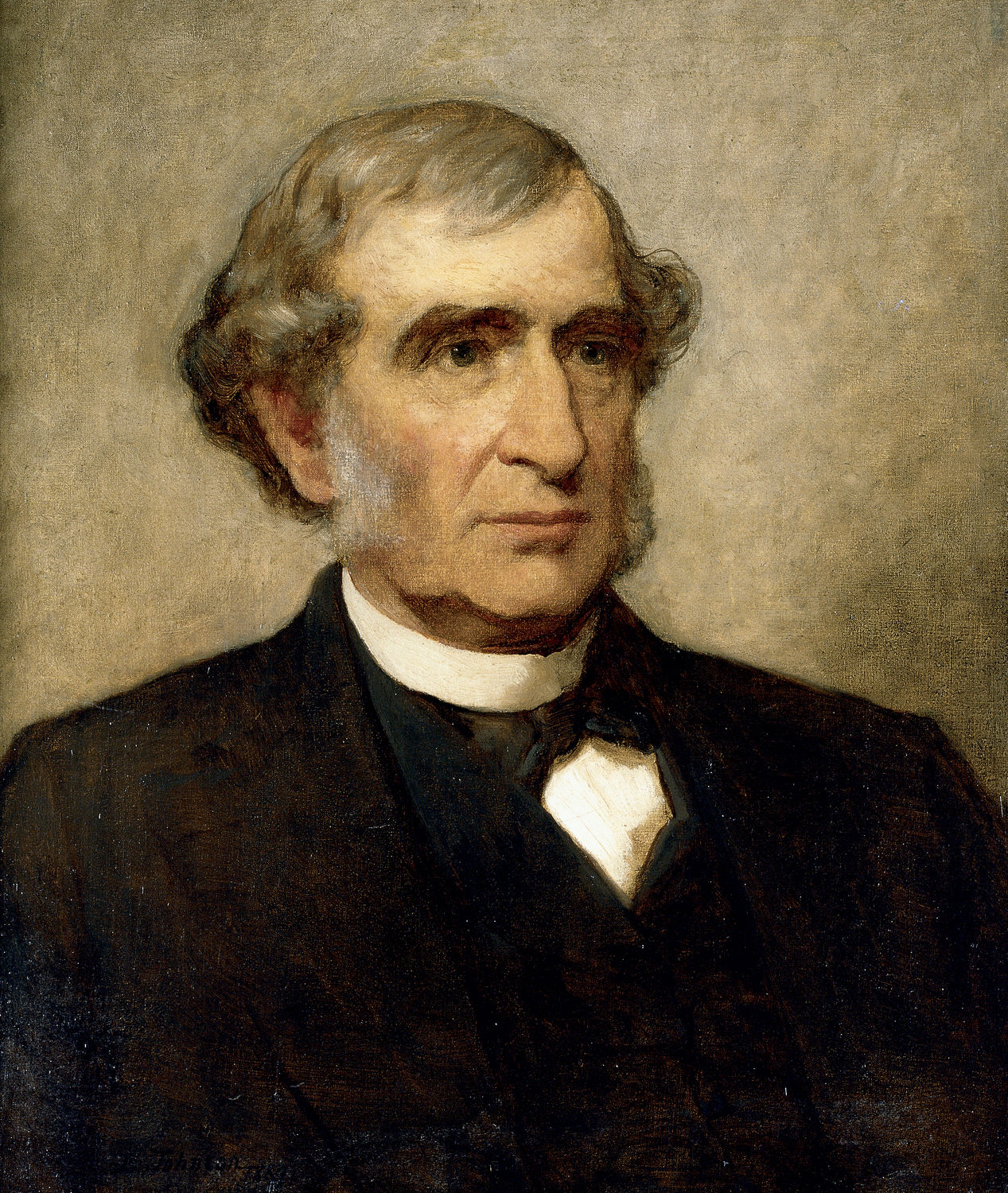
| Title | Justin Morrill |
| Artist/Maker | Jonathan Eastman Johnson ( 1824 - 1906 ) |
| Date | 1884 |
| Medium | Oil on canvas |
| Dimensions | Sight: h. 24.75 x w. 20.75 in. (h. 62.865 x w. 52.705 cm)
Canvas: h. 25.125 x w. 21.1875 in. (h. 63.8175 x w. 53.8163 cm) Framed: h. 30.5 x w. 35.5 in. (h. 77.47 x w. 90.17 cm) |
| Credit Line | U.S. Senate Collection |
| Accession Number | 32.00005.000 |
After securing a reputation as one of the finest genre painters of the late 19th century, Eastman Johnson concentrated increasingly on portrait painting in his later years. It was a more lucrative subject matter in which he had considerable experience, and after 1880 his distinguished roster of sitters included industrialists, financiers, and politicians. Among them were two U.S. presidents, Grover Cleveland (1891) and Benjamin Harrison (1895), whom the federal government commissioned Johnson to paint. The bust-length portrait of Senator Justin Morrill is arguably superior to these larger presidential portraits, both in the White House collection. Broadly painted and securely modeled, Morrill’s head is depicted against a backdrop of mottled, modulated grays, a refreshing change from the preponderantly dark and murky backgrounds of so many late-Victorian portraits. The several grays in Morrill’s hair, as well as his softly painted muttonchops, play subtly against this lively background.
In Johnson, Morrill found a painter whose temperament was well suited to his own. A New Englander like the senator, Johnson evidenced empathy for the admirable legislator’s character in this sober portrait. Firmness of character is conveyed through firmness of structure in the closely observed features. Morrill’s gaze follows the turn of his head, looking away from the viewer and creating a thoughtful mood.
Cornell University, one of the institutions created by the Morrill Land Grant College Act, had honored the “Father of the Agricultural Colleges” by commissioning Eastman Johnson to paint Morrill’s portrait in 1883. At the picture’s unveiling that year in Ithaca, New York, the senator remarked: “The sitting for a portrait, if I may be pardoned for saying so, is rather an awkward business for a modest man who can find anything else to do.” [1] Morrill ordered this excellent replica of the Cornell painting from Johnson the following year for display in his Washington, D.C., home. The house was built under the direction of Architect of the Capitol Edward Clark, with decorated ceilings by artist Constantino Brumidi. The Johnson portrait was in Morrill’s possession at the time of his death. In 1920 Louise S. Swan, sister-in-law of the late senator, bequeathed the painting to the United States to be hung in the Capitol.
1. William Belmont Parker, The Life and Public Services of Justin Smith Morrill (1924; reprint, New York: Da Capo, 1971), 305.
Born in Strafford, Vermont, Justin Smith Morrill entered politics after careers as a merchant and a farmer. Elected to the U.S. House of Representatives in 1854 as an antislavery Whig, he moved to the U.S. Senate in 1867 as a Union Republican. A committed protectionist, he supported tariff legislation and strongly opposed inflationary measures. Morrill also sponsored significant educational and cultural projects. He recommended that the Old Chamber of the House of Representatives become National Statuary Hall, where portrait sculpture from each of the states could be displayed. Morrill also promoted construction of the Library of Congress building, oversaw the expansion of the Capitol grounds, and supported a plan to redesign the governmental core of Washington, D.C. But he is best known as the author of the Morrill Land Grant College Act of 1862, which provided for the foundation and funding of state agricultural and mechanical colleges from the sale of public lands. This act ultimately resulted in 68 new colleges across the nation. In 1890 Morrill sponsored the second Morrill Land Grant College Act, which provided additional funding. At the time of his death in 1898, the senator held the record for the longest continuous congressional service—nearly 44 years.